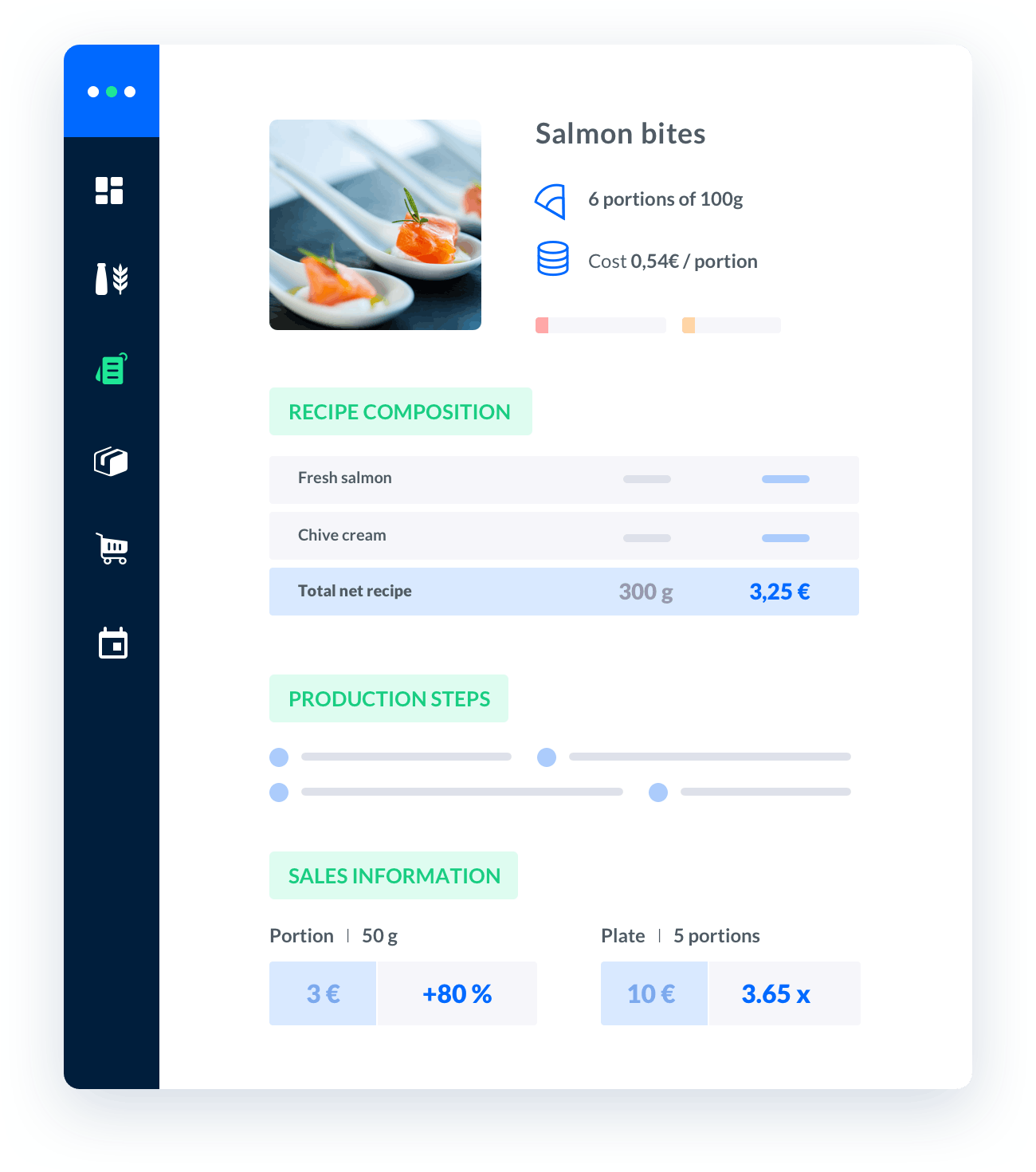how to calculate food cost percentage per dish
Calculating the food cost percentage per dish is an essential task for professionals in the catering industry.It helps in determining the profitability and pricing of menu items.

Melba: the food cost app to optimize the profitability of your restaurant
Discover how to optimize the profitability of your restaurant with melba

The ultimate guide to food cost restaurant
Learn more about the food cost basis and how to reduce your food cost percentage
Calculating the food cost percentage per dish is an essential task for professionals in the catering industry. It helps in determining the profitability and pricing of menu items. In this comprehensive guide, we will walk you through the step-by-step process of calculating the food cost percentage per dish, enabling you to make informed decisions for your business.
Understanding Food Cost Percentage
Food cost percentage is a vital metric used by catering professionals to assess the profitability of individual menu items. It represents the portion of the total cost of ingredients used in a dish relative to its selling price. By calculating the food cost percentage, you can evaluate the efficiency of your menu pricing and make adjustments as necessary.
Finding the Total Cost of Ingredients
To calculate the food cost percentage per dish, you first need to determine the total cost of ingredients used. Here's how you can do it:
- Start by creating a comprehensive list of all the ingredients required for the dish.
- Obtain the purchase prices for each ingredient from your suppliers.
- Multiply the quantity of each ingredient required by its respective purchase price.
- Add up the costs of all the ingredients to get the total cost of ingredients for the dish.
Calculating the Selling Price
The selling price is the amount at which you will offer the dish to customers. To calculate the selling price, consider the following factors:
- Take into account the target profit margin you wish to achieve for the dish.
- Consider any additional costs associated with preparing and serving the dish, such as labor, overheads, and other expenses.
- Add the cost of ingredients to the additional costs and desired profit margin to determine the selling price.
Calculating Food Cost Percentage
Now that you have the total cost of ingredients and the selling price, you can calculate the food cost percentage per dish. Follow these steps:
- Divide the total cost of ingredients by the selling price.
- Multiply the result by 100 to get the food cost percentage.
The obtained food cost percentage represents the portion of the selling price that is attributed to the cost of ingredients. It helps you understand the financial impact of each dish on your overall profitability.
Optimizing Food Cost Percentage
Once you have calculated the food cost percentage per dish, you can take further steps to optimize it and maximize your profits. Here are some strategies you can implement:
1. Review Ingredient Costs
Regularly review the costs of your ingredients and compare them with alternative suppliers. This can help you identify opportunities to reduce costs without compromising on quality.
2. Control Portion Sizes
Ensure that your staff follows standardized portion sizes for each dish. Inaccurate portioning can lead to variations in food costs and affect the overall profitability.
3. Minimize Waste
Implement efficient inventory management practices to minimize food waste. Track the usage of ingredients, rotate stock, and properly store perishable items to reduce unnecessary costs.
4. Menu Engineering
Analyze your menu and identify high-profit and low-profit items. Consider adjusting the pricing or modifying the recipes of low-profit dishes to improve their profitability.
5. Negotiate with Suppliers
Establish strong relationships with your suppliers and negotiate better prices for ingredients. Bulk buying and long-term contracts can help you secure favorable rates.
By implementing these strategies and regularly monitoring your food cost percentage, you can optimize your menu's profitability and make informed decisions to drive your catering business forward.
Remember, accurately calculating the food cost percentage per dish is crucial for maintaining a profitable operation. By following the steps outlined in this guide, you can ensure that your pricing strategy is in line with your business goals.






